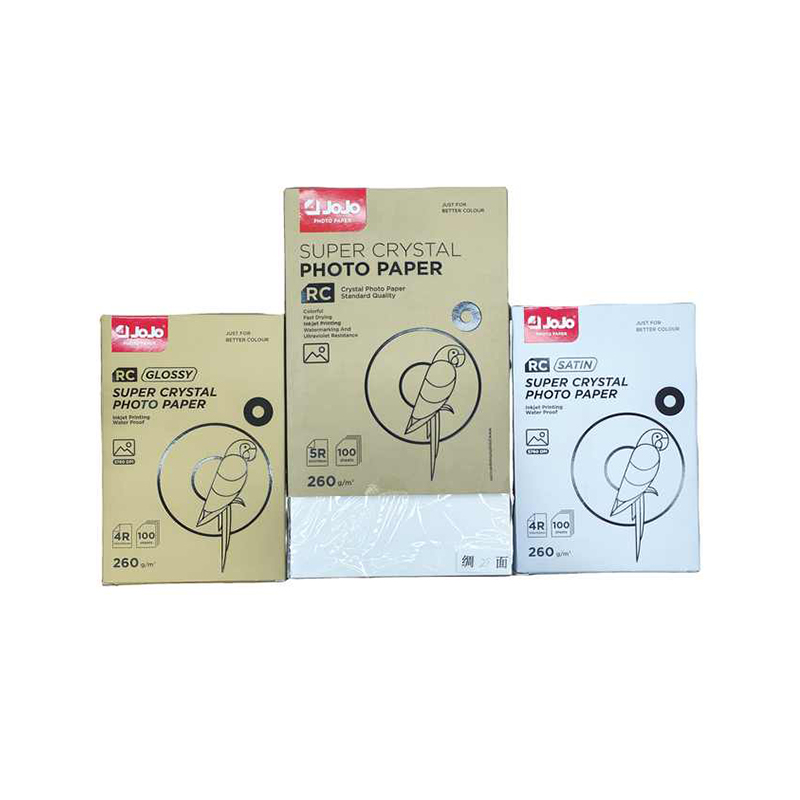If you need any help, please feel free to contact us
Thermal Stability Of Printable Coatings
Whether dealing with printer paper for heat transfer, self adhesive thermal paper, or photo paper for art prints, understanding the properties of the coatings applied to these substrates is essential for achieving reliable and lasting results.

Understanding Printable Coatings
Printable coatings are specialized layers applied to various types of paper or film to enhance ink absorption, color reproduction, and surface smoothness. These coatings also play a critical role in protecting the print from environmental factors such as moisture, UV exposure, and heat. Thermal stability, in particular, refers to the coating’s ability to maintain its structural and chemical integrity when exposed to elevated temperatures during printing or post-processing.
Thermal Stability in Heat Transfer Printing
Heat transfer printing relies heavily on temperature to transfer images from printer paper for heat transfer onto substrates like textiles, ceramics, or metal. The coatings on heat transfer papers must withstand significant heat and pressure without degradation. If the coating lacks thermal stability, it can result in poor adhesion of the ink or sublimation dyes, color fading, or uneven transfer.
The composition of printable coatings used on heat transfer paper typically includes polymers that can resist thermal breakdown. These polymers help maintain the paper’s flexibility and surface characteristics even when subjected to temperatures often exceeding 180°C during the transfer process. Additionally, coatings that provide a smooth, uniform surface enable the ink or dye to bond properly, ensuring the final print on fabric or other substrates is sharp and vivid.
Self Adhesive Thermal Paper and Coating Durability
Self adhesive thermal paper is widely used in applications such as labeling, receipts, and ticket printing. Unlike traditional ink-based printing, thermal papers rely on heat-sensitive coatings that darken upon exposure to a thermal printhead. The thermal stability of these coatings determines the lifespan and readability of the printed information.
Thermal paper coatings need to resist not only the heat generated during printing but also environmental factors like friction, moisture, and UV exposure. Poor thermal stability can advance to premature fading or smudging, which compromises the usefulness of printed labels or receipts. Modern self adhesive thermal papers incorporate coating formulations designed to balance sensitivity to heat with durability in varying environmental conditions.
Moreover, the adhesive backing on these papers must also endure heat without losing tackiness or causing the paper to curl excessively. The interaction between the thermal coating and adhesive is a critical aspect of the overall performance and usability of self adhesive thermal paper products.
Photo Paper for Art Prints: Balancing Heat Resistance and Image Quality
Photo paper for art prints demands high-quality printable coatings that provide both accurate color reproduction and surface protection. Many fine art prints use pigment-based inks that require coatings with strong ink absorption and lightfastness. Although photo paper is generally not exposed to high temperatures during printing, thermal stability of coatings remains relevant during certain drying processes and when handling or framing prints.
Thermal stability ensures that the coatings do not warp or degrade over time, which can affect the appearance and longevity of art prints. For example, some photo papers undergo drying or curing processes that apply moderate heat to accelerate ink setting. Coatings that can withstand these temperatures without cracking or discoloration contribute to a more consistent print quality.
Additionally, thermal stability in photo paper coatings helps resist changes in humidity and temperature that occur during shipping and display. Art prints are often expected to maintain their visual integrity for extended periods, making the thermal and environmental stability of coatings an important factor in product selection.
Material Considerations and Testing
Manufacturers of printer paper for heat transfer, self adhesive thermal paper, and photo paper for art prints invest significant effort in formulating coatings that meet specific thermal stability requirements. Common components include acrylic polymers, polyurethane dispersions, and various cross-linking agents that enhance heat resistance.
Thermal stability is often tested through accelerated aging studies, where coated papers are exposed to controlled heat and humidity cycles. These tests simulate the stresses papers might encounter during printing, storage, and end use. Performance metrics include color retention, surface integrity, and adhesion strength after heat exposure.
In addition to laboratory testing, real-world usage scenarios provide valuable feedback on how printable coatings perform under practical conditions. This continuous evaluation helps refine coating compositions to balance print quality with durability across different printing technologies and applications.
The thermal stability of printable coatings is a vital attribute for a wide range of digital printing materials, including printer paper for heat transfer, self adhesive thermal paper, and photo paper for art prints. Coatings that maintain their integrity under heat exposure contribute to better print adhesion, durability, and overall product performance. Understanding the relationship between coating composition, thermal stability, and application requirements can assist printers, designers, and manufacturers in selecting the right materials for their projects. As digital printing technologies evolve, ongoing advancements in printable coatings will continue to influence the quality and versatility of printed products across various industries.

 English
English Español
Español 中文简体
中文简体 Português
Português

